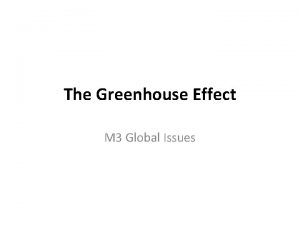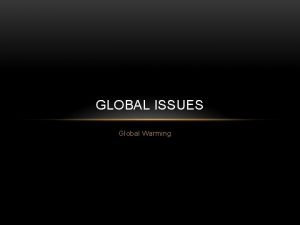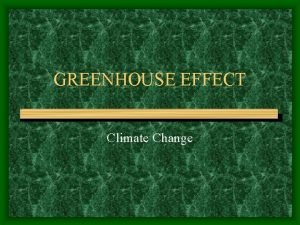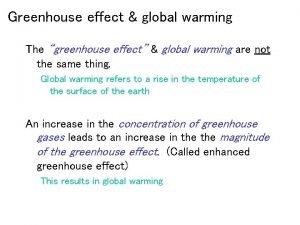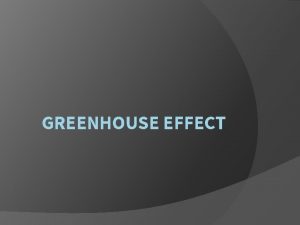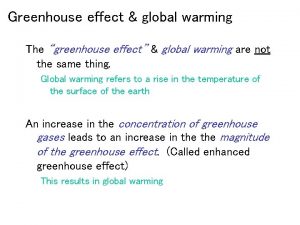Explaining Temperature Patterns Greenhouse Effect The greenhouse effect





- Slides: 5

Explaining Temperature Patterns Greenhouse Effect The greenhouse effect is often misunderstood and mistaken for "Global Warming". The greenhouse effect is a good thing. Our atmosphere does not allow all the sun’s heat in, days are not too hot. It keeps some heat in at night, so nights are not too cold. It moderates our temperature. Planets without atmospheres have an extreme variation in temperature between day and night. Mercury Day Temp = 4650 C Night Temp = - 1850 C

Latitude and Temperature Latitude – distance north or south of the equator. High latitudes – far from the equator. Low latitudes – closer to the equator. Complete # 13 on page 58 -59. As latitude increases temperature generally decreases. As latitude decreases temperature generally increases.

The Earth’s Shape and Temperature The poles of the earth are colder than the equatorial regions of the earth because of the earth's spherical shape.

When light hits the equator it is direct (at 90 o to the earth's surface) and has to heat a small area – hotter temperatures. When light hits the polar regions it is less direct (at more than 90 o to the earth's surface) and has to heat a larger area – colder temperatures.

Assess the Accuracy of Temperature Descriptions. Complete # 14 on page 59. A. West coast temperatures for North America and Eurasia are colder than inland temperatures on the same latitude. False. Generally they are actually warmer. B. Low latitude temperatures are always hot. True. (Except for high altitude areas. ) C. In the high latitudes, there is a great difference between summer and winter temperatures. True. (Notice the difference between the January and July maps. D. In the Southern Hemisphere, January is the cooler period. False. July is the cooler period. E. The further south you go, the warmer it gets. False. The closer to the equator you go, the warmer it gets.


